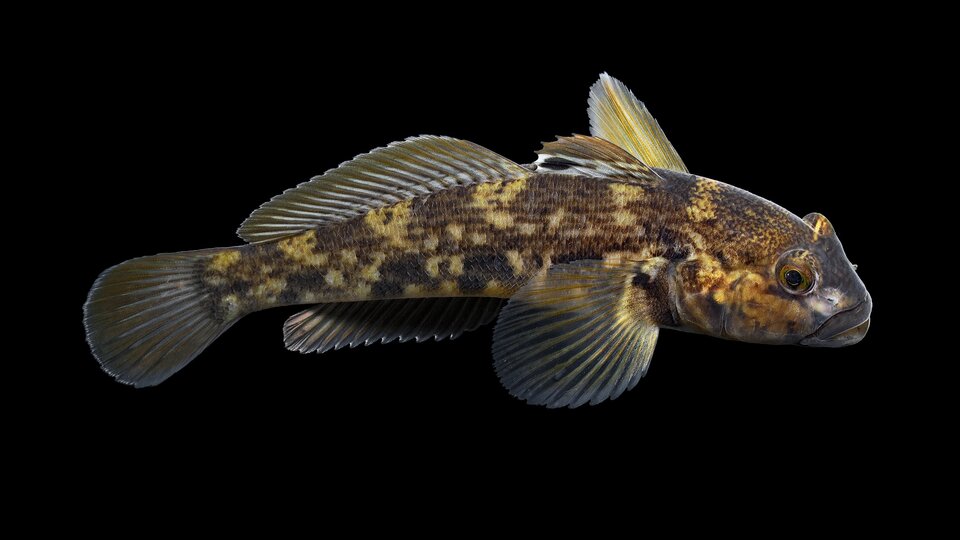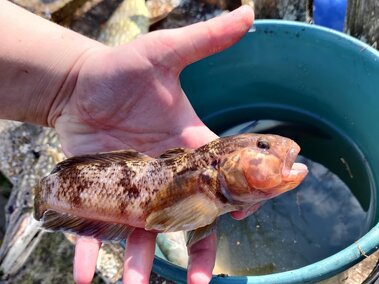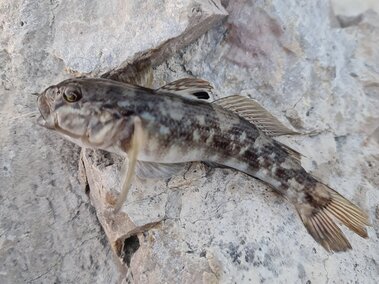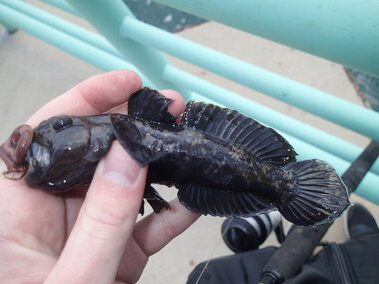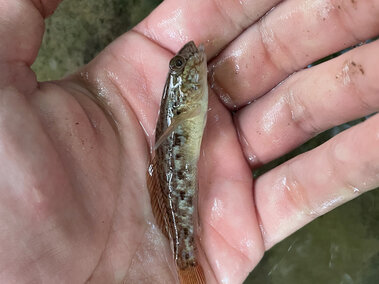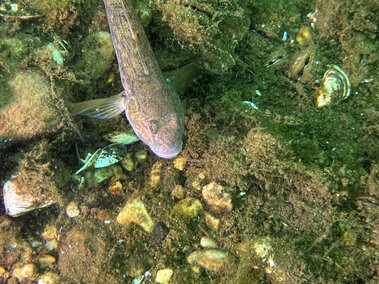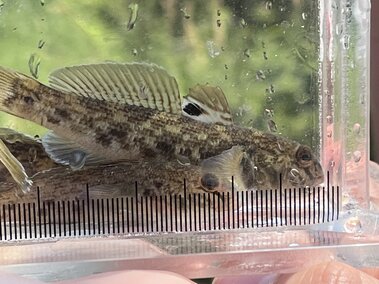Credit: Alex R, some rights reserved (CC-BY-NC), iNaturalist
General Information
Species Name: Neogobius melanostomus
Also Known As: round goby
Family: Gobiidae (Bony)
Life Span: 4 years
Life Cycle: Female round gobies mature at 1-2 years with clutch (100-4000 eggs) related to body size. They can spawn every 20 days from April to September.
Origin: Eurasia
Injurious: No
Category 1: Potential Aquatic Invasive Species
Why Are They Invasive?
Round goby are aggressive predators of fish eggs, such as those of native smallmouth bass, and contribute to the decline of many valuable sport fish populations. They are aggressive competitors with small, native fish and other bottom-dwellers. Round goby are highly territorial for food, shelter and optimal spawning sites. Often, anglers are the first to discover round goby because these aggressive fish are commonly caught by hook and line and are a serious nuisance to anglers using live bait.
What Do They Look Like?
Round goby are small (usually less than 7 in. [17.8 cm]) , mottled gray and brown fish with a prominent black spot at the rear of the first dorsal fin. Young round gobies are solid slate gray. All gobies have their pectoral fins fused to a single suction-cup-like disc. They have frog-like, raised eyes.
Photos
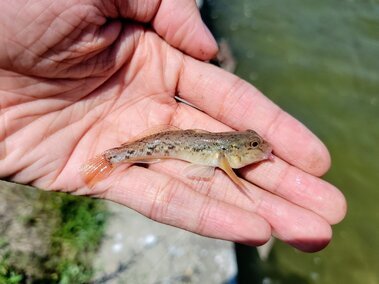
Credit: Yifei, some rights reserved (CC-BY-NC), iNaturalist
Where Do They Live?
Round goby occupy the nearshore, preferring rock, cobble or riprap. Lacking a swim bladder, they are bottom-dwelling, perching on rocks and other surfaces with fused pelvic fins. They tolerate a wide range of conditions, including low oxygen and high pollution. They are currently widespread in all of the Great Lakes and are expanding into tributaries, like the lower Illinois River. They are currently not found in Nebraska.
How Do They Spread?
Round goby were introduced to the Great Lakes via ballast water, first discovered in 1990 near Detroit and reported in all five Great Lakes by 1995.
How Do I Control Them?
Contact the Nebraska Game and Parks Commission to determine appropriate control methods. To prevent their spread and introduction into your waterbodies:
CLEAN your watercraft, trailer, angling gear and other equipment. Remove all aquatic vegetation and animal species from your equipment.
DRAIN your watercraft at the ramp by removing the boat plug and draining all live wells and ballast tanks.
DRY your watercraft, trailer and other equipment for at least 7 days before visiting another waterbody.
DON'T DUMP BAIT. Dispose of bait by emptying bait buckets on dry land, away from waterbodies or in a trash receptacle. Moving a live organism from one waterbody to another is illegal, even if you are planning to use the organism as bait.
DON'T LET IT LOOSE. Do not release or transport exotic or non-native fish species to new ecosystems. It is unlawful to release any aquatic species into a waterbody other than the one from which it was harvested. Doing so can promote the spread of AIS.
What Should I Do If I See Them in Nebraska?
If you see round goby in Nebraska, you should report them to the Nebraska Game and Parks Commission's Aquatic Invasive Species (AIS) Program using their AIS Report Form. For guidance on what information to include in your report, check out our reporting tips.
References and More Information
Center for Invasive Species and Ecosystem Health
Minnesota Department of Natural Resources
Nebraska Game and Parks Commission
